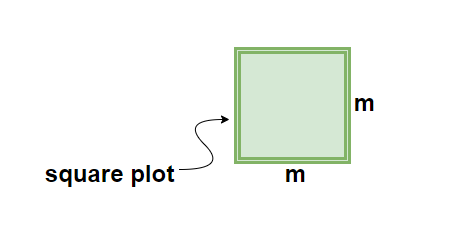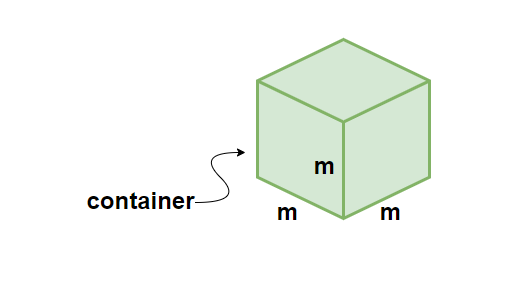面积、体积和密度的测量
当人类看到他们童年的照片时,他们首先意识到的是,与他们生命的早期阶段相比,他们变得多么高或重。注意到体重的增加或变得更高是通过测量完成的。到处都需要测量,以便专门比较一个量的值与其原始值。需要测量的例子有很多,例如,温度计用于测量身体的摄氏温度,墙上的时钟用于测量时间,以小时为单位,等等。
测量
通过将一个量与同一物理量的标准值进行比较来计算其值称为测量。可以说,测量将物理量与其数值联系起来。
通常,通过将物体彼此相邻放置来测量物体,并且可以解释哪个更重或更高等。测量物体会给出两个结果 - 值和数量的单位。例如,刻度的长度是 15 厘米,其中 15 是数值,厘米是用于长度的单位。
公制
公制是来自十进制的系统,该系统用于测量基本量,公制为单位的转换铺平了道路,即可以将较大的单位转换为较小的单位,反之亦然,因为系统。存在的基本量是米、克和升,它们用于测量长度、体积/质量和容量的量。
长度测量
根据公制,长度以米为单位计算。但是,根据需要可以很容易地转换成其他形式,例如,如果要求测量较大的量,则以公里为单位,如果要求以较小的量为单位,则应以厘米为单位。比方说,要求是测量一定的距离,它应该以米或公里为单位。

下面是解释转换的更简单方法,


面积测量
以标准方式,任何数量的面积都以米2为单位测量,因为面积是一个二维量,本质上是标量。它涉及到两个不同方向的长度,称为长度和宽度。较大量和较小量的面积可以使用不同的单位轻松转换,例如,如果要测量小桌子的面积,则以 cm 2为单位,如果要测量地块的面积,则以单位使用的是2米。

下面是解释转换的更简单方法,

体积测量
任何数量的体积本质上都是三维的,即三个方向的长度,与长度或面积不同,体积包含容量。测量体积的标准单位是meter3。单位根据数量的大小转换成更大和更小的单位,如分米 3 或千米 3,只需简单地除以/乘以十、百、千等即可。

下面是解释转换的更简单方法,

密度测量
任何物体的密度定义为该物体每单位体积的质量。密度表明分子在一定体积中的排列距离有多近或多远。著名的科学家阿基米德发现了物体密度的概念。在公制中,密度以 kg/m 3为单位测量,并表示为 D 或ρ。因此,可以表示为,
Note:
- Density has big significance in real life. One example to prove the same is the concept of an object floating on water, The density of any object helps in identifying whether an object can float on water or not. If the density of the object is lesser than that of water (997.7 kg/m3), it will float on water.
- The SI unit of density is kg/m3, but for measurement of solids, g/cm3 can also be used. In order to measure the density of liquids, mostly g/ml is used.
示例问题
问题 1:将以下转换:m 3到 mm 3 ,升到米3 ,英里3到 km 3 。
解决方案:
The conversion of the above-mentioned quantities are as follows,
- m3 to mm3
1 meter = 1000 millimeters
1m3= 1000 × 1000 × 1000 mm3
Therefore, 1m3 = 1 × 109 m3.
- Liter to meter3
It is known that 1 meter3 = 1000 liters
By unitary method, 1 liters = 1/1000 m3
1 liter= 1 × 10-3 m3.
- Mile3 to km3
1 mile = 1.609 km
1 mile3 = 1.609 × 1.609 × 1.609 km3
1 mile3 = 4.165 km3
问题2:公制和英制测量系统有什么区别?
回答:
Difference between metric system and imperial system,Metric system Imperial system Known as International systems of units Known as British imperial system Measurement is done in Meter, gram and liter Measurement is done in feet, pound, inches Simple conversion (used by 95% of population currently) Complex conversion
问题3:计算一个质量为1200kg、体积为10m 3的物体的密度。
解决方案:
Density of an object is given as,
D = 1200/10 kg/m3
D = 120 kg/m3.
问题4:有两个装满饼干的大盒子。第一个有 10 个饼干,第二个有 20 个饼干包。盒子的体积相同。解释哪个盒子更重?
回答:
The concept is based on density. Density of an object is defined as mass/volume. Here, both the boxes have equal volume but the mass of the second box is more as it contain twice as many biscuits as first box. Hence, the second box will weigh more.
问题 5:给出一个体积为 1000m 3的立方体。计算立方体的表面积,以 cm 3为单位。
解决方案:
The surface area of a cube = 6a2
where a is the length if the side of cube
Given, Volume of cube= 1000m3 =a3
a = 10meter
Surface area (in meter2) = 6 × 102 = 600meter2
1 meter= 100 centimeter
1 m2= 100 × 100 cm2
Therefore, Surface area of the cube= 600 × 104 cm2.
问题6:一个长方体的长和宽相同,但高是两倍。如果长方体的体积是54000m 3 ,求长方体的长、宽、高,单位为厘米。
解决方案:
Volume of a cuboid = L × B × H= 54000m3
Let the length and breadth be z, then the height will be 2z
2z × z× z= 54000
2z3= 54000
z3= 27000
z= 30m
Length= 30m, Breadth= 30m, Height = 60m
In centimeters, Length= 30× 100= 3000cm
Breadth = 30 × 100= 3000cm
Height= 60 × 1000= 6000cm
问题 7:一个厘米刻度有 15 个点,刻度是多少米?
解决方案:
Converting cm scale into m scale,
1 cm = 10-2m
15 cm = 0.15m
Hence, a 15cm long scale has a length of 0.15m in International System of Units.